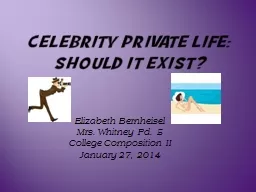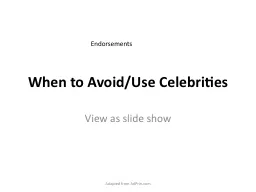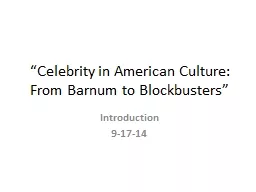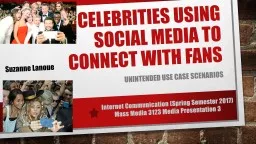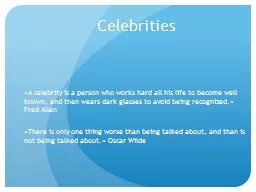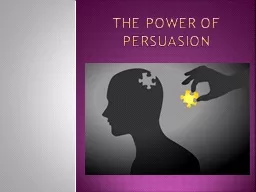PPT-“The celebrities of media culture are the icons of the pr
Author : alexa-scheidler | Published Date : 2015-10-02
Douglas Keller University of California Culture of Celebrity In the early 2000s the public was alerted to a newly documented apparently widespread malady called
Presentation Embed Code
Download Presentation
Download Presentation The PPT/PDF document "“The celebrities of media culture are ..." is the property of its rightful owner. Permission is granted to download and print the materials on this website for personal, non-commercial use only, and to display it on your personal computer provided you do not modify the materials and that you retain all copyright notices contained in the materials. By downloading content from our website, you accept the terms of this agreement.
“The celebrities of media culture are the icons of the pr: Transcript
Download Rules Of Document
"“The celebrities of media culture are the icons of the pr"The content belongs to its owner. You may download and print it for personal use, without modification, and keep all copyright notices. By downloading, you agree to these terms.
Related Documents

